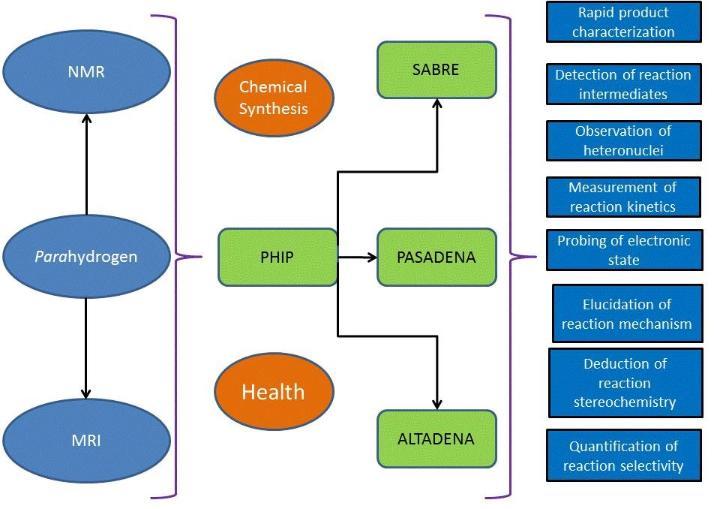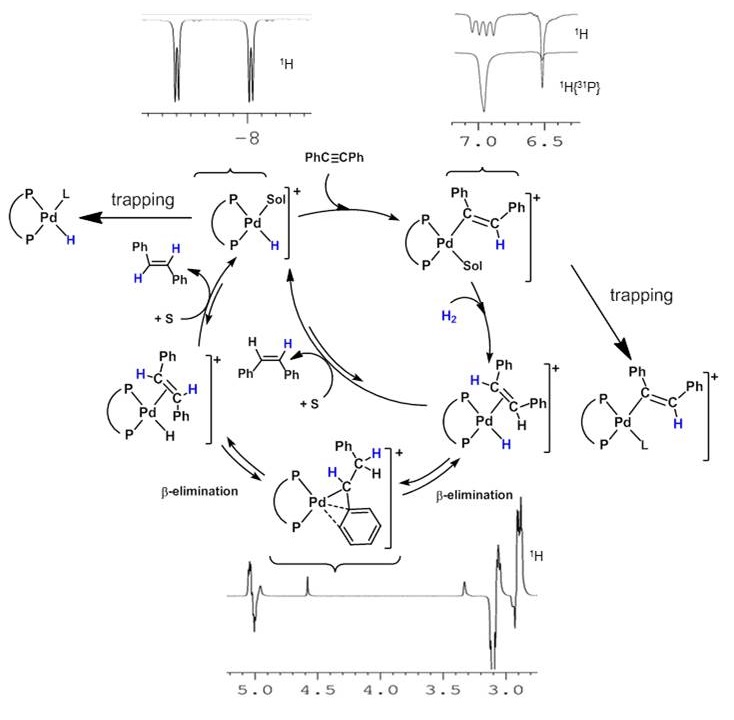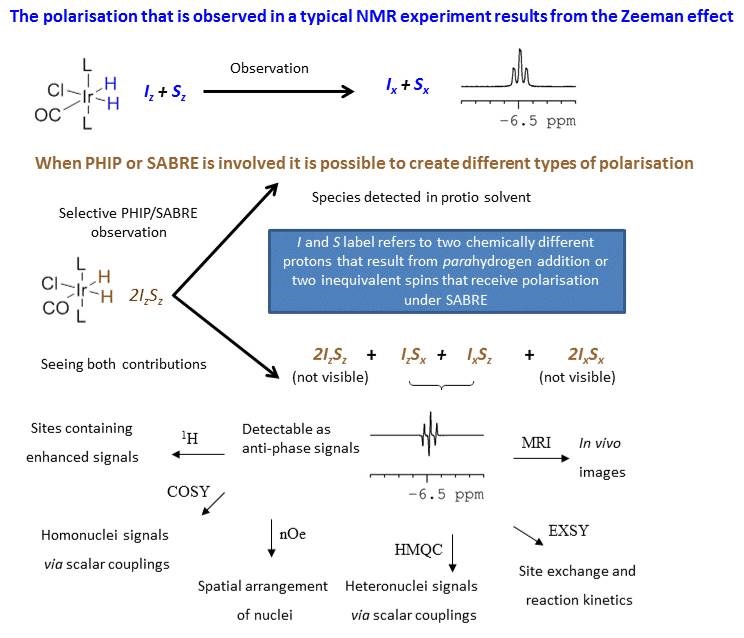CHyM applications
There are many applications for hyperpolarization derived from parahydrogen, as shown below.

These applications include the detection of reaction intermediates that are present in low concentration. Such species play an vital role in catalysis and hence understanding their physical properties reflects one important aspect of reaction optimisation. We have detected many species involved in reactions with hydrogen since we started research in this area in the 1990s. These materials have often been definitively characterised by NMR spectroscopy and their direct involvement in catalysis quantified. These studies have helped to provide insight into hydrogenation and hydroformylation reactions that span homogeneous, cluster and heterogeneous routes. The reaction scheme shown below illustrates how a number of palladium hydride complexes can be seen during a hydrogenation reaction. By varying the nature of the phosphine, using trapping agents (L) and changing the substrate a detailed kinetic mapping of this reaction sequence becomes possible through its PHIP illumination.

The parahydrogen platform is therefore fully suited to the study of many industrial processes and our latest SABRE development means that a much wider array of reactivity can be followed because H2 no longer needs to feature in the transformation. Furthermore by making use of the special properties of the polarisation that is created under these conditions it is possible to observe the molecules that receive polarisation even in protio solvents.

Our most recent extension into laser spectroscopy with parahydrogen means that in the future we expect to be able to monitor rapid reactions using this approach.
